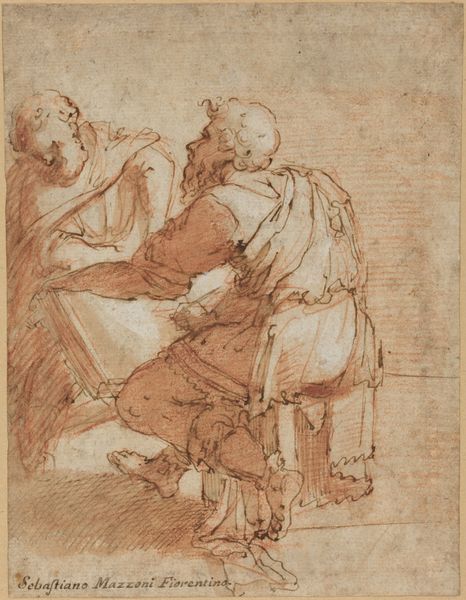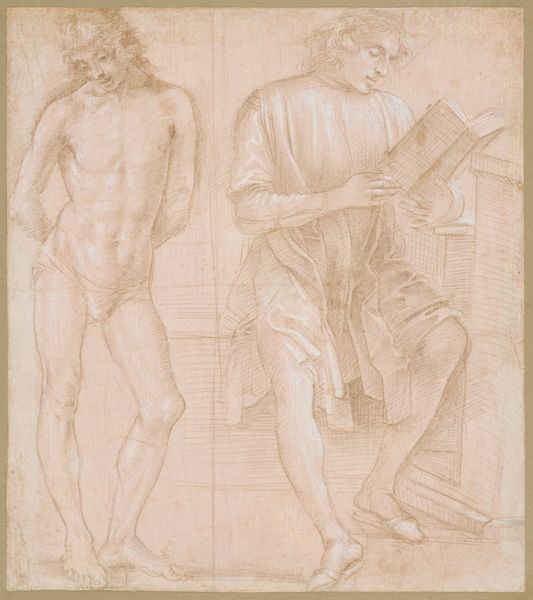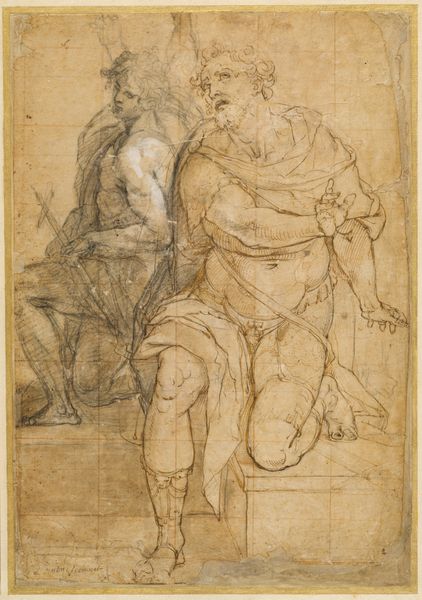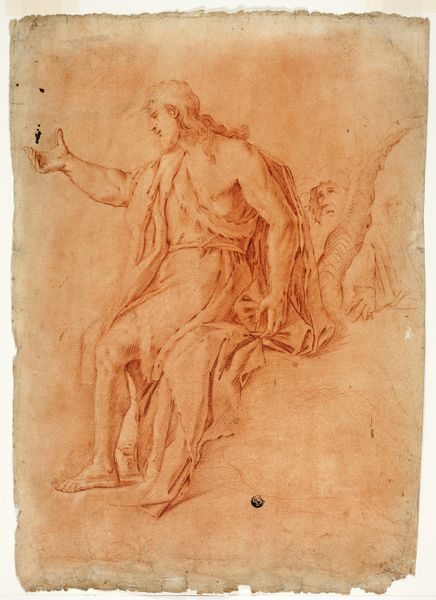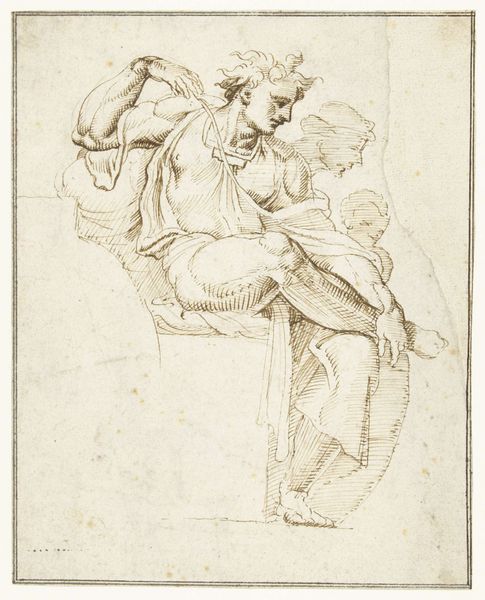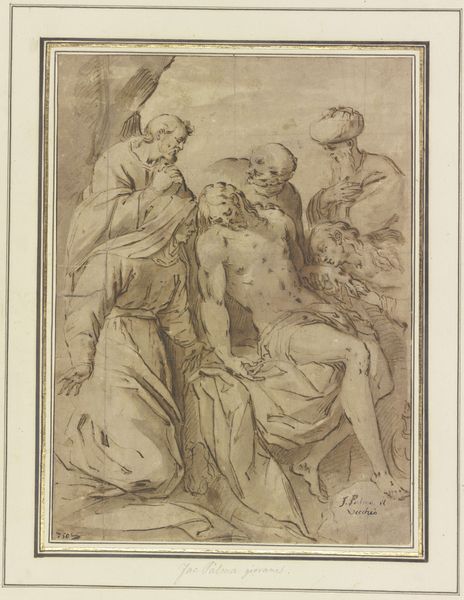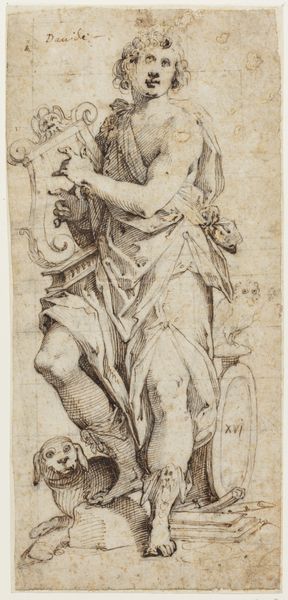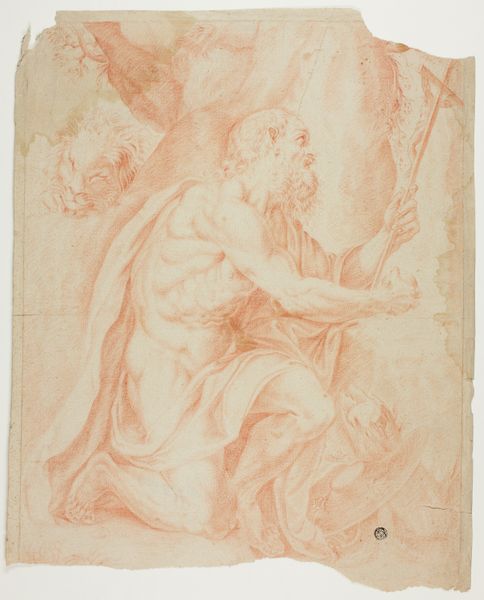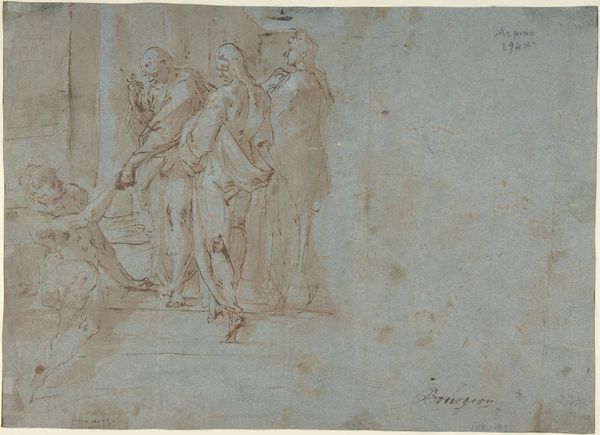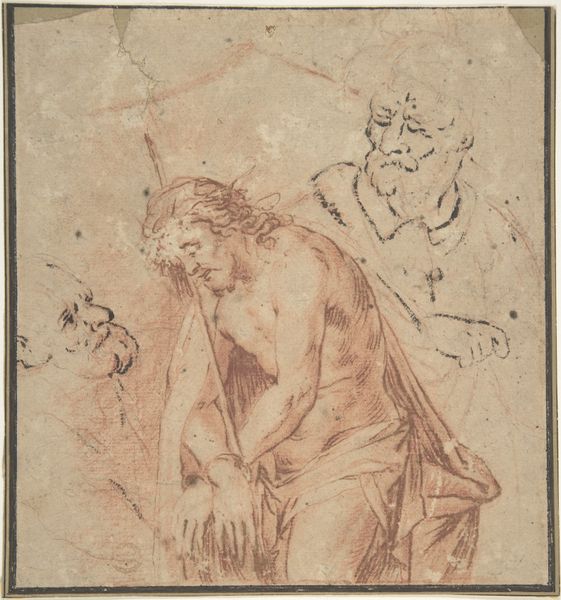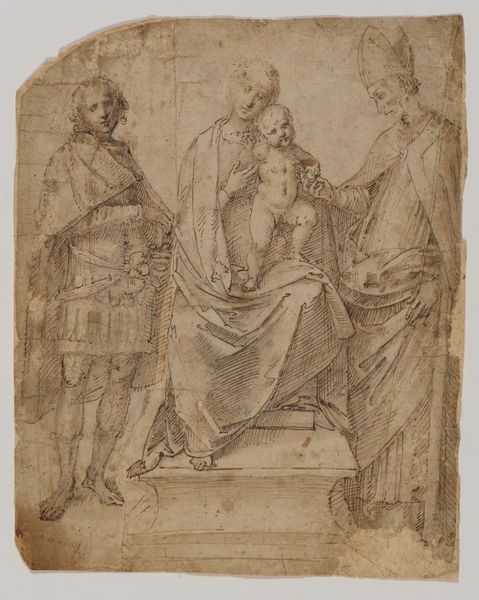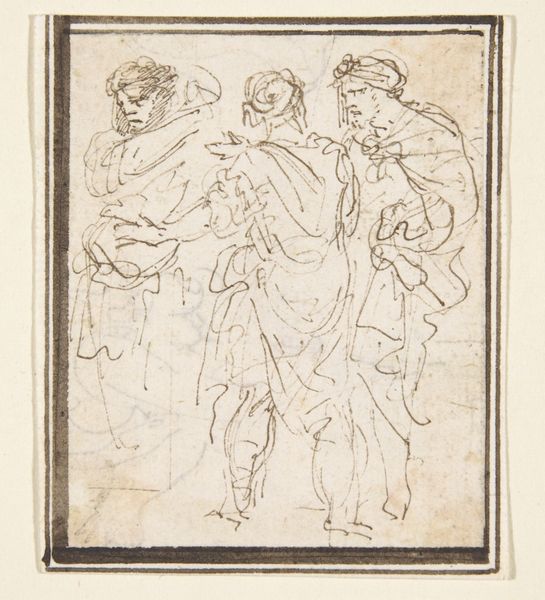
drawing, print, ink
#
drawing
#
narrative-art
# print
#
figuration
#
11_renaissance
#
ink
#
italian-renaissance
Dimensions: 8-7/8 x 7-1/4 in. (22.5 x 18.4 cm)
Copyright: Public Domain
Editor: Here we have Vincenzo Tamagni's "Creation of Eve," a pen and ink drawing from the early 16th century, part of the Italian Renaissance. The composition feels sparse, almost like a study. What do you see in this piece, and how might we interpret it through a contemporary lens? Curator: This seemingly simple drawing provides a potent entry point to exploring Renaissance understandings of gender and creation. While on the surface, it depicts a biblical scene, beneath lies a complex web of patriarchal assumptions about female subjectivity. Note how Adam, presumably, extends his hand. Eve emerges passively, almost as an extension of him. Editor: That's a really interesting point. I hadn't considered Eve's passivity within that historical framework. Curator: Precisely. Think about the social constraints placed upon women during the Renaissance. The Church, societal norms – all heavily influenced how artists, predominantly male, represented women. How does this depiction challenge or reinforce contemporary discussions around female agency and representation? Editor: So, by acknowledging the historical context, we can use this artwork to spark conversations about the continued struggles for equality and challenging traditional power structures? Curator: Exactly. Art becomes a catalyst. "Creation of Eve," rather than simply being a religious depiction, invites us to interrogate the enduring legacies of gendered power dynamics. It prompts crucial questions: who has the authority to create narratives, and whose voices are often marginalized or erased in the process? Editor: I see now that even a preliminary drawing like this can unpack centuries of social and political thought. It highlights how deeply embedded some of these ideas still are. Curator: Yes, by grappling with these historical representations, we can gain a deeper understanding of ourselves and work towards more equitable and inclusive futures.
Comments
No comments
Be the first to comment and join the conversation on the ultimate creative platform.

